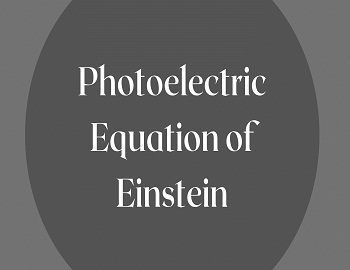Escape Velocity:
When we throw a body upward it returns back to the earth after attaining a maximum height depending upon the velocity with which it is thrown and the direction of projection. If the body is given sufficient velocity to overcome gravity, it could escape from the earth’s influence and will never return to the earth. This velocity is called the escape velocity.
Thus escape velocity is defined as the minimum velocity with which the body has to be projected vertically upwards from the surface of the earth so that it just crosses the gravitational field of the earth and never returns on its own.

In order to find the escape velocity, let us find the minimum energy which a body must possess so that when it may just escape. If the mass of the body is “m” and its distance from the centre of the earth is “x” then the external force required to pull the body without acceleration is-
| Fext = GMm/x2 |
where M is the mass of the earth. Therefore, the work done in moving a small distance dx is-
| dW = Fext dx = [GMm/x2] dx |
Total work done in taking the body against gravitational attraction from the surface of the earth (i.e. x = R) to a region beyond the gravitational field of the earth (i.e. x = ∞) can be calculated by integrating the above expression within the limits x = R to x = ∞. Thus total work done is-

Let the escape velocity of the body be ν, then its kinetic energy is 1/2mν2. The work done to remove the body from the surface of the earth is equal to kinetic energy.
| 1/2mν2 = GMm/R or ν2 = 2GM/R or ν = √(2GM/R) ……….(i) But g = GM/R2 ∴ GM = gR2 Put this value in equation (i)- ν = √(2gR2/R) ν = √(2gR) |
If ρ is the mean density of the material of the earth then,
| M = 4πR3ρ/3 Putting this value in equation (i), we get-  |
Important Points:
- Escape velocity is independent of the mass and direction of projection of the body.
- Escape velocity depends on the mass and radius of the planet.
- Escape velocity from the surface of the earth, ν = √(2gR) = √(2 x 9.8 x 6.4 x 106) = 11.2 km/sec.
- A planet will have an atmosphere if the velocity of a molecule in its atmosphere [νrms = √(3RT/M)] is lesser than escape velocity. That’s why the earth has an atmosphere while the moon has no atmosphere.









Comments (No)